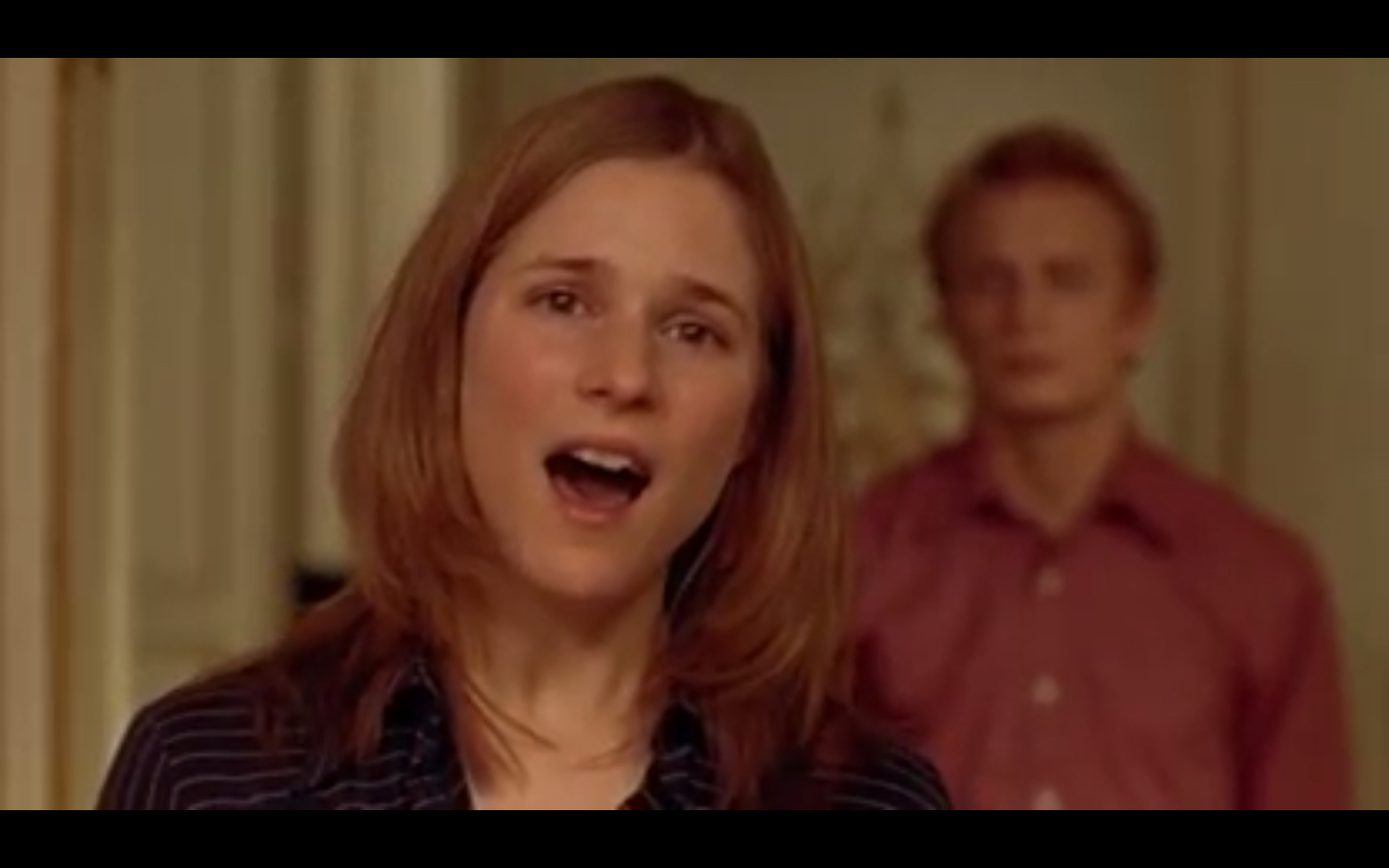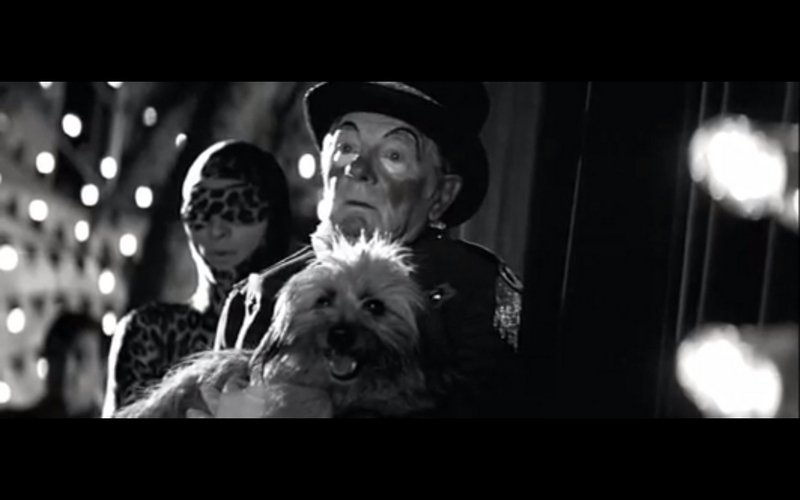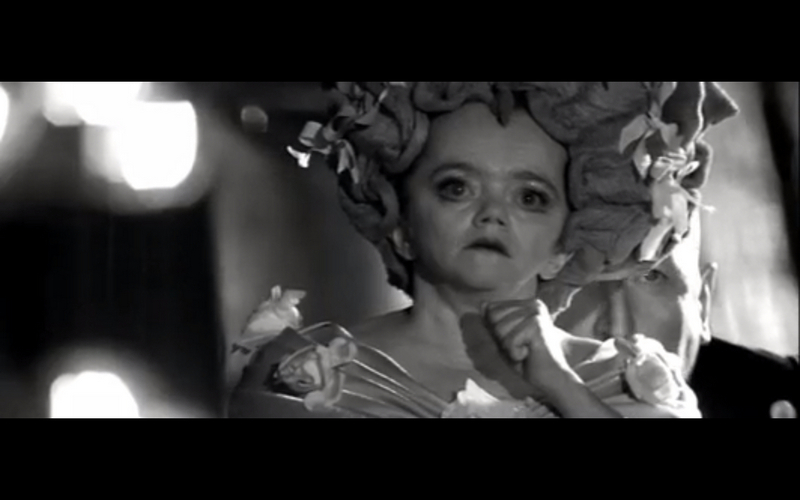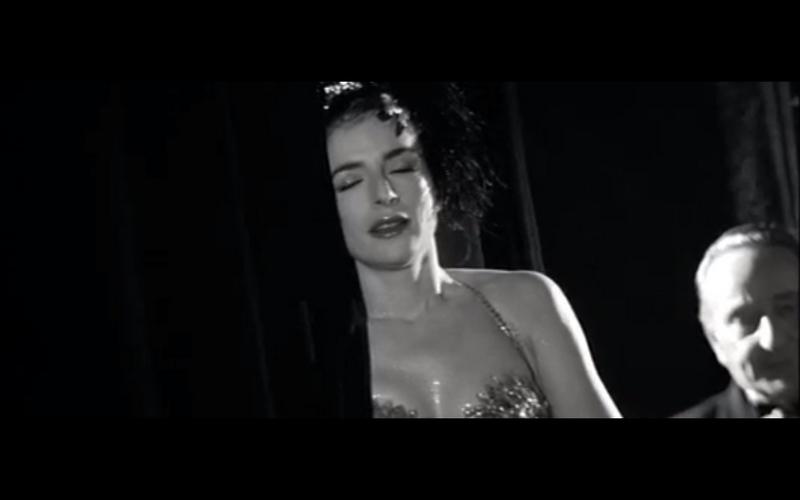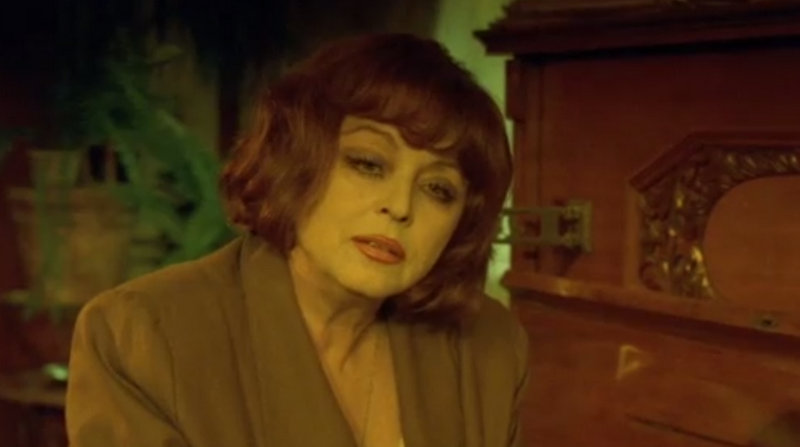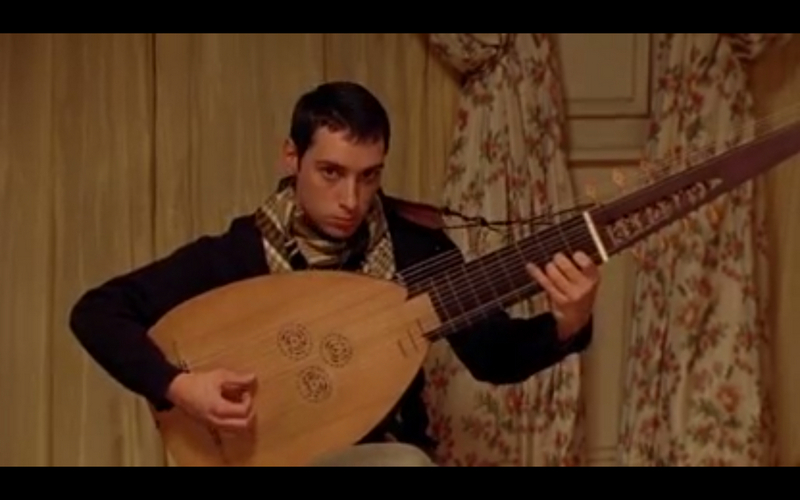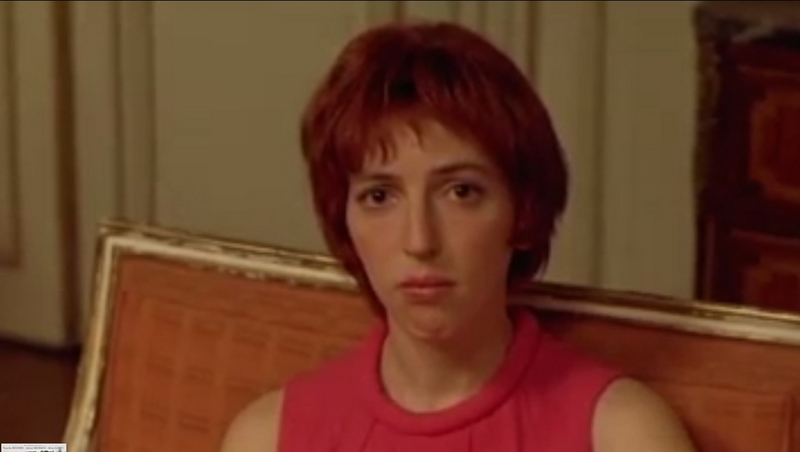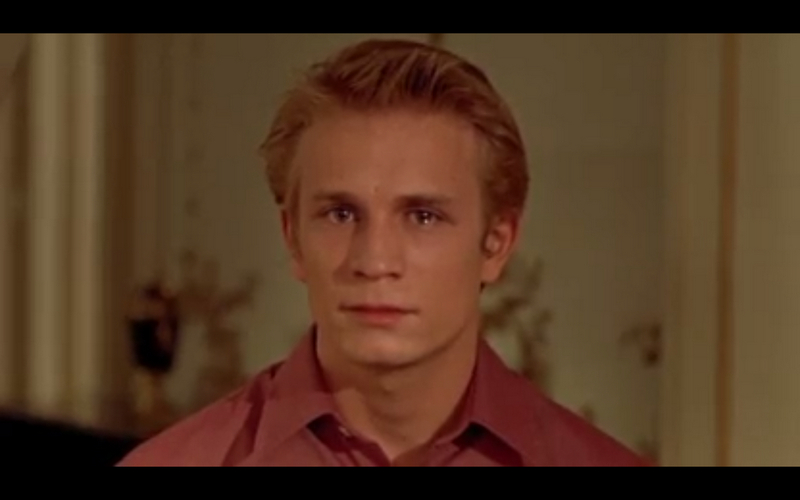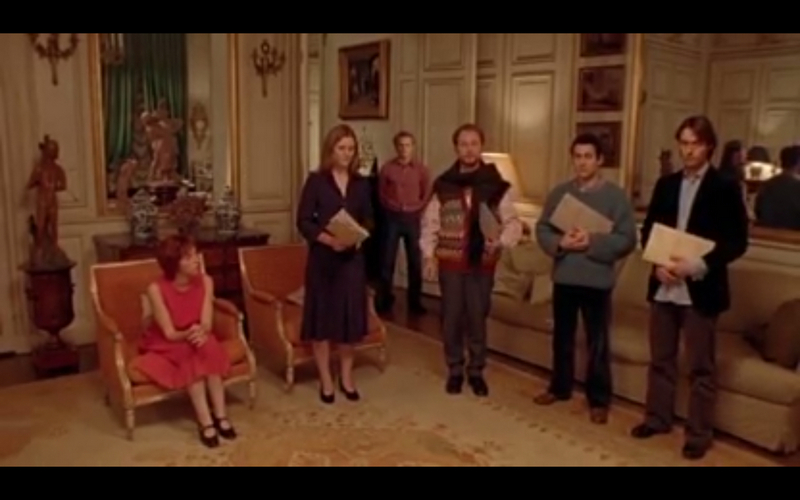.
In this scene from Eugene Green’s Le Pont des Arts, an opera singer, Sarah (Natacha Regnier), sings a profound performance of Monteverdi’s “Lamento Della Ninfa.” She has been struggling to please the conductor, a bastard destroyer of beauty who cruelly describes her voice, in a previous scene, as sounding like a “sick kangaroo.” They are preparing the piece to be performed for a recording, and in this scene we see a sublime moment where his opinion no longer matters. The sequence, like others I’ve pointed to in Numero Cinq at the Movies, could be a standalone short film: everything we need is held in this discrete scene. Green’s careful crafting of shots distances us from the soulless, impervious-to-the-sublime conductor and brings us face to face with a heart-breaking beauty.
At the core of this scene is a fascinating visual distinction between third-person and second-person framing, where we see the primary action of the other musicians performing (third person) while in other camera shots we see Sarah and a select audience listening to her singing as they stare right at the camera, ostensibly Sarah but vicariously, us, directly addressing us with their emotional experiences (second person). This split between perspectives probably speaks to Green’s own theatre background and the theatre device of dramatic asides, but here it also creates a dichotomy where as audience we are encouraged to have a closer and more vulnerable experience of the beauty of what Sarah’s voice creates.
The scene is blocked like it would be on a stage, the places where the musicians, the conductor, and the singers stand and even the formal way that Sarah enters the scene. What is glaringly missing is an actual audience, but in its place we have a small chorus of more significant witnesses. The audience within a film can show us how to experience the art at hand. This is a common film device, one I have pointed to elsewhere: the backstage audience in the knife throwing scene in A Girl on a Bridge (which also has a suicidal woman on a Parisian bridge, incidentally);
but also appearing in profound ways in films like Krzysztof Kieslowski’s Double Life of Veronique with the music conductor’s inscrutable melancholy, nostalgic gaze;
or similarly in Pedro Almodovar’s Talk to Her, where the male nurse in the audience witnesses a more profound response to the art via the man sitting beside him.
These characters show us what we might feel, give us permission.
In Pond des Arts, the split between third person and second person in this scene begins with Sarah’s entrance. We see her begin, we identify her with the sublime voice, then the camera moves to spend time with her audience: the lovesick looking lute player intent on his accompaniment (read desire);
the envious, though moved vocal accompanist who sits gloaming like an understudy;
but most importantly, Cedric, the blond man who openly weeps at the performance. Though elsewhere in the film the recording of Sarah’s sublime vocal performance will prevent a disillusioned philosophy student from committing suicide, nothing equals Cedric’s experience in this scene.
The later two of these people are, in the blocking of the scene, actually behind Sarah. The camera frames their direct-camera emotional experiences for us but there are not available to Sarah. We see them illicitly. These are private moments, much like the dramatic monologues in theatre, where a character expresses something internal and private with the audience alone.
These direct camera address shots offer us, the viewing audience, possible mirrors. Who will we identify with and who do we want to be in the film: the jealous and envious and enraptured woman, the mandolin player with the absurd affections, or the beautiful blond man with who is deeply touched by the singing. Or Sarah, after all who would not want to sing with such sublime beauty. Or perhaps identification is more complicated than I am allowing, and this emotional experience for the audience involves identifying with all of these mirrors.
The piece itself, Monteverdi’s “Lamento Della Ninfa,” is composed to have a frame similar to this scene. Monteverdi noted “she has to sing according the her emotions” (al tempo dell’affetto del animo), while the pastori were expected to sing at a regular beat (al tempo della mano). Green parallels this tension between the regular beat, the rather unmoved third person shots here, and the more emotionally affected line of the vocalist, here the chorus of faces having emotional experiences in reaction to Sarah’s performance.
The pastori, the three men singing with her and by extension the conductor and the accompanists, offer this frame visually in the film. They are the day-to-day, the regular heartbeat, the floor and walls her voice echoes off. The frame is useful here: imagine if the film only presented us with Cedric weeping. Would we be less likely to identify with him, less open to his expressiveness? Nothing visually compels us to choose the mundane world, to be the third-person audience. The film inserts us into the desiring chorus of the second-person expressions, intimately connected to the sublime.
Seen just in this scene, we don’t know fully why Cedric weeps, what it is about Sarah’s performance that moves him, and this too creates a space for desire, a visual desire to understand the mystery of what he experiences and why. Something about the vulnerability of his experience rules out erotic or romantic desire. His experience seems very much for himself. Even seeing the rest of the film doesn’t permit any greater access to Cedric. We see him as a pawn to the conductor, we see he cares about Sarah insofar as he loves the beauty of her voice and feels compassion for her, but nothing that would explain the depth of his emotional experience in this scene.
The scene ends without applause, another space of negation. Do we want to applaud and do we want to applaud more to fill the absence of applause?In the face of such a sublime emotional experience, applause seems a trite response. The players are left in awkward stances, paper rustling, speechless as to how to make the sublime reconcile with the desert of the mundane world. Immediately following this awkward silence the conductor tells the players “Not too bloody bad, my children, not too bloody bad.” His negative compliment desecrating the sublime, showing us the most base way to move from it back to the day-to-day; he has no access to the experience we have had.
This scene, like the film to some extent, seeks to trouble the relationship between beauty and art and the rest of the world. As Stephen Holden argues in his article “A Leap, With Music, Into the Seine of Art,” “The movie is an audacious, mythically slanted inquiry into the place of high art in today’s chaotic culture and an assertion of its primacy.” Pond des Arts prioritizes the vulnerable experience of art, particularly in the face of “ideas” or posturing that move away from that experience.
—R. W. Gray
.
.
